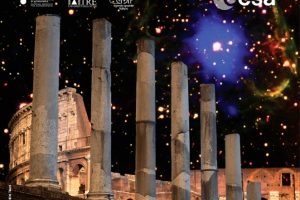Great participation of OAPA astronomers to the “X-ray Universe 2017”

More than 300 experts in high-energy astrophysics from all around the globe have participated to the meeting “X-ray Universe 2017”, which finishes today.
The “X-ray Universe”, organized by ESA with the participation of several institutions such as INAF, is one of the most important periodic meeting about high-energy astrophysics, mainly focused on X-ray astronomy. This year it has been held in Rome, with a rich program counting 32 talks by invited speakers and 32 parallel sessions: AGN (8 sessions), Binary systems and ULXs (6 sessions), Cluster of Galaxies (4), Neutron stars, Supernovae and Supernovae Remnants (3), Planets & Stars (3), Cosmology (2), Athena (2), Galaxies (2), Accretion (1), and future X-ray missions (1)
The “X-ray Universe 2017” meeting has also seen a great participation of astronomers from the Astronomical Observatory of Palermo, as a further demonstration of the worldwide importance of the research on X-ray astronomy made by OAPA’s scientists.
- Antonio Maggio gave the talk “SPI-ing Exoplanets“, on the interaction between exoplanets and their host stars;
- Ignazio Pillitteri gave the talk: “Ages and Distances to Star Forming Regions from the synergy of X-rays and IR observations” on the distance of star forming regions obtained from the X-ray properties of their members;
- Rosaria Bonito has talked about accretion in pre-main sequence stars in “Properties of accreting young stars and their disks: comparison between high energy observations and MHD“;
- Mario Giuseppe Guarcello’s talk was focused on the optical and X-ray variability in pre-main sequence stars with disks in the talk: “Time resolved X-ray spectral analysis during optical dips and accretion bursts in stars with disks of NGC 2264 from Chandra/ACIS-I and CoRoT data“;
- Salvatore Orlando has shown his recent study n the connection between supernovae and their remnants in: “The supernova – supernova remnant connection through multi-dimensional magnetohydrodynamic modeling“;
- Marco Miceli has talked about the X-ray emission of SN 1987 A in: “The physical origin of the X-ray emission from SN 1987A“
